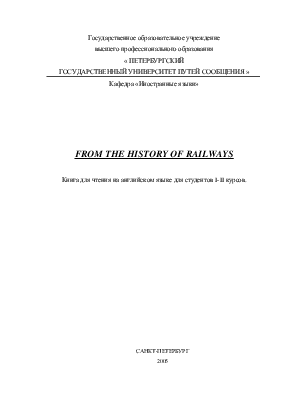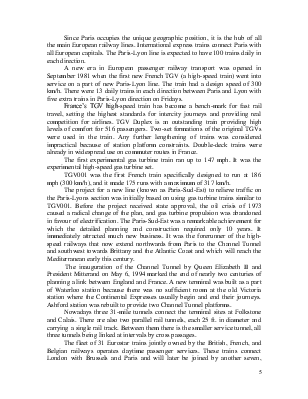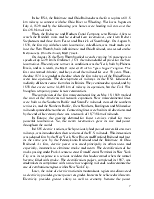

























Государственное образовательное учреждение
высшего профессионального образования
« ПЕТЕРБУРГСКИЙ
![]() ГОСУДАРСТВЕННЫЙ УНИВЕРСИТЕТ ПУТЕЙ СООБЩЕНИЯ »
ГОСУДАРСТВЕННЫЙ УНИВЕРСИТЕТ ПУТЕЙ СООБЩЕНИЯ »
Кафедра «Иностранные языки»
FROM THE HISTORY OF RAILWAYS
Книга для чтения на английском языке для студентов I-II курсов.
САНКТ-ПЕТЕРБУРГ
2005
|
What is a railway? “The time will come when people will travel in carriages moved by steam engines from one city to another, almost as fast as birds can fly, 15 or 20 miles an hour… A carriage will start from Washington in the morning; the passengers will breakfast at Baltimore, dine at Philadelphia, and sup in New York the same day…” Oliver Evans, 1800 |
How Railways Began
First of all let us establish quite clearly in our minds what is meant by the term Railway. A railway is a special form of road where the weight of the locomotives and wagons using it is evenly distributed by the rails to the sleepers and ballast, which support these rails. This ensures that the locomotives and their wagons follow the fixed path from which they cannot deviate.
There is an evidence that the people of Ancient Egypt appreciated the advantages of moving heavy objects by rolling them along “prepared ways”: the Pyramids were undoubtedly built with the aid of roads or roller ways by which the gigantic stones were hauled by almost unlimited slave labour. It is a well-known fact that the people of Ancient Greece and Rome used to construct their roads from flat stone blocks out of which a groove was cut to act as a channel along which the wheels of the carts could revolve. Perhaps the most striking fact about these ancient “routes” was that the grooves for the wheels were set 1.445 meters apart, almost equal to our standard gauge today of 4 ft. 8.5 ins. on the railways.
The next stage in the development of the track was the 16th century. About this time, in the coal mining areas of Great Britain and on the Continent much thought was given to the best ways in which the heavy loads of coal from the mines could be moved to the canals and ports where sailing ships were to take the coal to other ports. Instead of grooves the miners used wooden rails elevated slightly above the ground. Small wooden carts full of ore were pushed out of the mines by hand. Then these wooden rails were mounted on large baulks of timber along which horses could pull their loaded wagons. These rails had the following disadvantage – they wore out very quickly. So, the next stage was to cover the surface of the rail with iron plates. The iron-plated wooden rails were very soon replaced by rails made of iron and were in wide use throughout Europe. There were also one or two examples in America. Even so, tramways had limited capacity. The most efficient tramways were designed so that loaded carts rolled downhill from the mine, assisted by gravity. A man rode each car and applied a brake to stop. Empty carts were pulled back uphill by horses.
In the middle of the 16th century the first flanged wheel was tested in Germany. The wheels of the carts had flanges to keep the wheels on the track and guide the cart around curves. The first rail or tramway to use wagons with flanged wheels was probably the Prior Park tramway opened in England some 150 years later. The great days of railway began.
Some years later a great advance was made – the first railway came into operation. It was the Leeds - Middleton colliery railway that was run with horsepower.
During the 1700s England was the birthplace of the industrial revolution. The industrial revolution depended on a source of power for the new machines being developed. Originally, waterpower was used, but as more power was needed, new sources had to be explored. The most efficient was steam power.
In 1705, Thomas Newcomen invented the steam powered pump for removing water from mines. In 1763, James Watt improved Newcomen’s engine. Today he is often referred to as the father of the steam engine
Уважаемый посетитель!
Чтобы распечатать файл, скачайте его (в формате Word).
Ссылка на скачивание - внизу страницы.